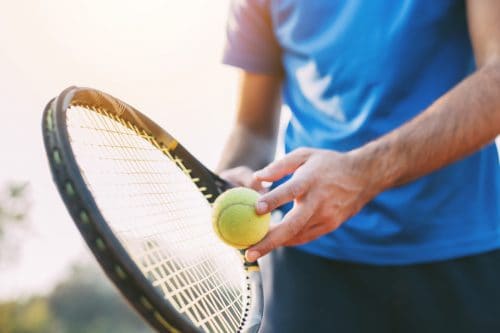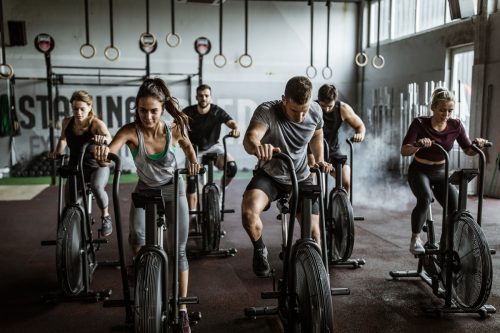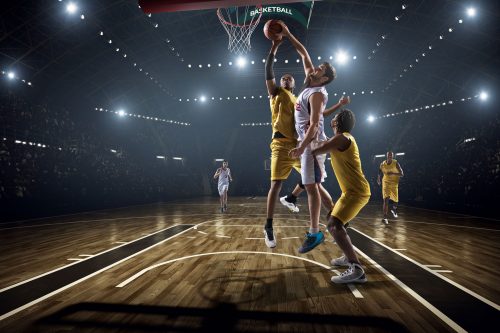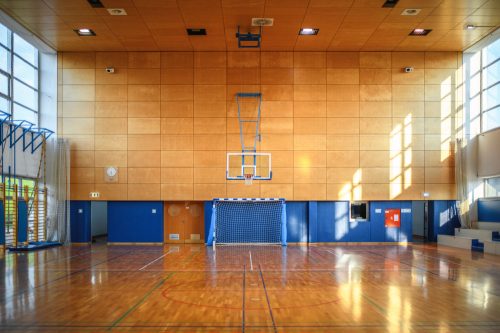If you want to play football, you'll need a pair of cleats. But if you're here, you aren't sure what type of cleat to get. We have researched each type's ins and outs, along with other questions you might be curious about, so you can pick the right cleats.
You will want to choose the cleat style based on the type of playing surface. There are three kinds of football cleats:
- molded - attached to the bottom of the shoe
- detachable - can be removed from the shoe
- turf style - for playing on synthetic surfaces
Now that you are aware of the basic kinds of cleats read on to discover which type of cleat fits your needs. We will discuss in detail the advantages and disadvantages of each type, plus answers to some other questions you might have while reading.
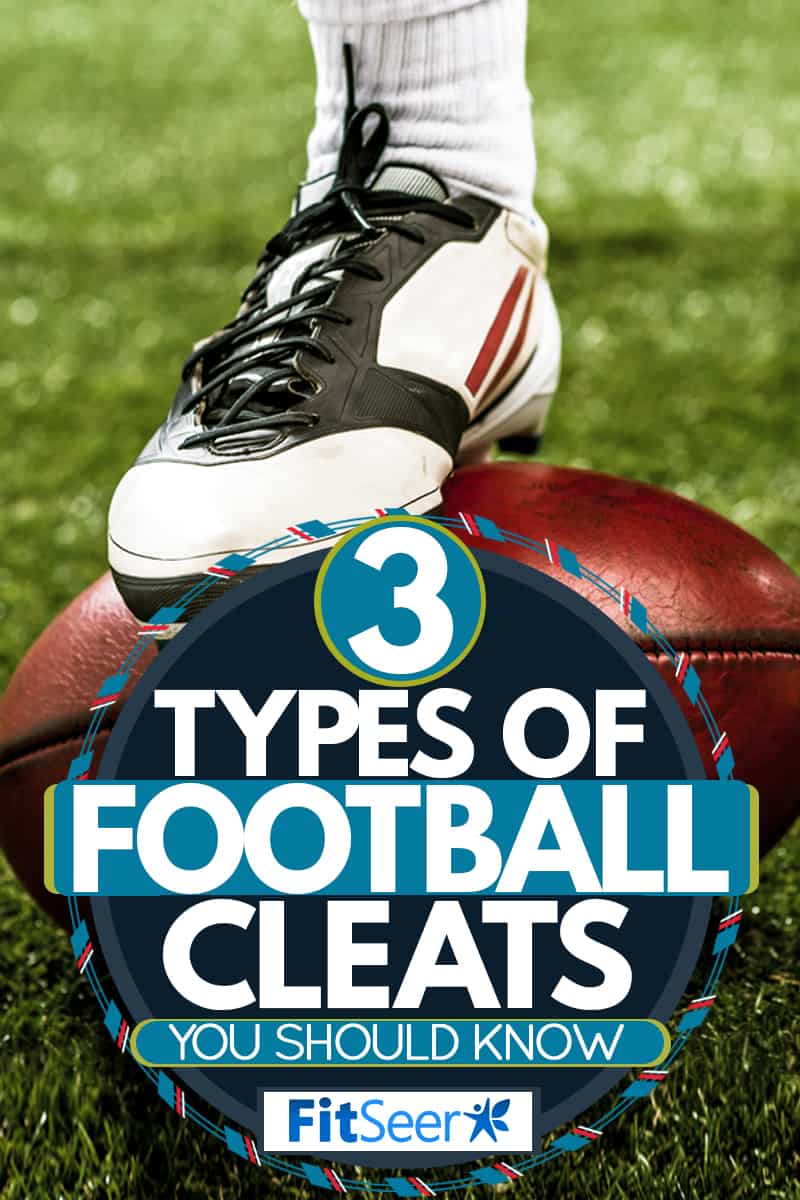
Molded Cleats
These are the cheapest and most common type of cleat. Molded cleats are permanently built onto the bottom of your shoe. They are usually made with rubber, hard plastic, or metal. Because they are attached to the shoe's bottom, the entire shoe needs replaced when they begin to wear down. Check out a great example, Nike Alpha Menace Varsity 2 molded cleats, on Amazon.
Molded cleats require less maintenance and specialize in one type of ground. Because they specialize in one kind of ground, it is important to check what type is and ask your coach what surface you will be playing on. You may need multiple pairs with different cleat lengths to adjust for the weather and different playing surfaces.
Detachable Cleat
Detachable cleats can be detached from the bottom of the shoe. This allows them to be easily replaced, as well as changed for differing weather and surface conditions. They also allow you to customize your studs' configuration, which you cannot do with molded cleats.
Detachable cleats are preferable when playing on grass because they are more versatile than molded cleats. It is because of this versatility that they are more expensive than molded cleats. Click here to check out Underarmour's Detachable Cleat on Amazon.
Turf Football Shoes
Turf football shoes are for people who play on synthetic surfaces or want a shoe to use during practice sessions. They have smaller bumps on the bottoms of the shoe, unlike the other cleats. These small bumps provide traction on artificial surfaces but won't work very well on hard ground.
Turf shoes tend to be more comfortable and flexible than other kinds of cleats. This is what makes them good training shoes. Click here to check out these Adidas Turf Football Shoes on Amazon.
Different Cleats for Different Playing Situations
It is important to use the correct cleat for different playing conditions, so you have the proper traction, and so you don't damage the field you are playing on. Using improper cleat types can cause you to slip and injure yourself.
You want to make sure your cleats are gripping properly, which is why they should be changed depending on the weather and the surface. When on artificial turf, you need to use turf shoes because the smaller nubs offer traction but prevent you from breaking the surface. However, if you play on harder surfaces, those small nubs won't grab the ground properly, so you need a longer length to grab the ground. In snowy or muddy conditions, you also want long cleats to prevent slipping.
How To Properly Fit Football Cleats
When you try on football cleats for the first time, they should feel comfortable on your feet. If they are tight or painful, they do not fit correctly. Don't assume that your shoe size and cleat size are going to be the same. Your longest toe should be approximately half an inch from the end of your shoe, and the heel should fit.
Your shoes should be flexible enough to comfortably make maneuvers you need to make while on the field. When you walk in them, you shouldn't feel pressure from the studs underneath or any rubbing. It is also important to wear the socks you will be wearing to play football when trying on your new cleats.
Breaking-in New Cleats
You will want to break your cleats in before starting to play in them for maximum comfort and foot safety. The first step is to wear them while walking around. Go for a walk around the block or to a park.
When you wear new cleats to practice, only wear them for a couple of hours at a time until you can comfortably wear them the entire practice. This will ensure maximum comfortability until they are fully broken in.
What Are Football Cleats Made Of?
Football cleats can be made with plastic, rubber, or metal. Metal cleats are the most durable and provide the highest-quality performance. However, many child and some adult football leagues prohibit the use of metal studs to avoid injuries.
How Do I Know If Cleats Are For Football?
Most cleats will say on the package for what sport and surface they are best. However, there are some key things to look for to ensure they are suitable for football.
Football cleats are heavier and more padded than other cleats. This is because they need to protect the player's ankles more from injury, as football is a rough sport. The actual studs on football cleats are longer, and the cleats come in more styles than other types. In addition to that, there's a toe spike on football cleats to help players get more leverage. It is important to be aware that baseball shoes also have this extra spike, but they tend to be lower cut than football shoes.
Can I Use Other Kinds Of Cleats To Play Football?
Football cleats are specifically built for football. They are longer than other kinds of cleats and more padded. Football involves a lot of physical contact, so football cleats are heavier to protect you from injury. If you tried to use cleats designed for a different sport, you would be putting yourself at a higher risk of injury. For this reason, you cannot use other kinds of cleats if you plan to play football.
What is the Difference Between Spikes and Cleats?
Spikes and cleats serve different purposes, despite the fact a lot of people use those words interchangeably. Both of them offer traction, but that is where the similarities stop.
Spikes are designed to be used when running races. They are lightweight and help increase your speed. However, they do not offer much stability and support, which makes it important to wear them only during races.
The main purpose of cleats is to help keep you on your feet. They support your ankles and arches in addition to providing padding to protect your feet and ankles from injury. They can be worn anytime you're playing or practicing.
How Long Do Football Cleats Last?
If you play football three to seven a week and have well-made shoes, you can expect them to last about three to four months. They don't last very long because when you play football, you constantly have people stepping on them, which is hard on the shoe. Luckily they are designed to protect you from the impact, so your feet don't have to take it!
Are High Top Cleats Better For Football?
Whether you should wear low top or high top cleats depends on your position on the field. Low-top cleats allow for more range of motion than high-top does, and are lighter. This makes them more ideal for players who have to move around more, like skill players.
High-tops are good for linemen and other players who don't move around as much. Linemen need to be sturdy, well supported, and grounded. Therefore, high tops are perfect for this position because they support your entire foot and ankle. Click here to check out high-tops from Under Armour on Amazon.
If you are a defensive lineman or a tight-end, you can go with either low-top or high-top. If you tend to spend a lot of time blocking or in the middle of things, you probably want to use high-tops because they offer more ankle protection. However, if you tend to stick to the edge, low tops could be better. When your position involves running and blocking, try a lighter high top or a heavier low top, depending on the most comfort and support for you.
Primary Considerations For Football Cleats
We have covered a lot of information, so here is a recap of the main points:
- There are three different kinds of football cleat: molded, detachable, and turf shoes.
- Most football players wear plastic cleats.
- Football cleats are heavier and provide more protection from injury than other types of cleats. This means that you have to use football cleats for football and cannot substitute cleats designed for other sports.
- It would be best to adjust your cleat type depending on surface type and weather conditions during play.
- Whether you use high-top or low-top cleats depends on what position you play.
Now that you've read this post, you are ready to step into your cleats and onto the field!





